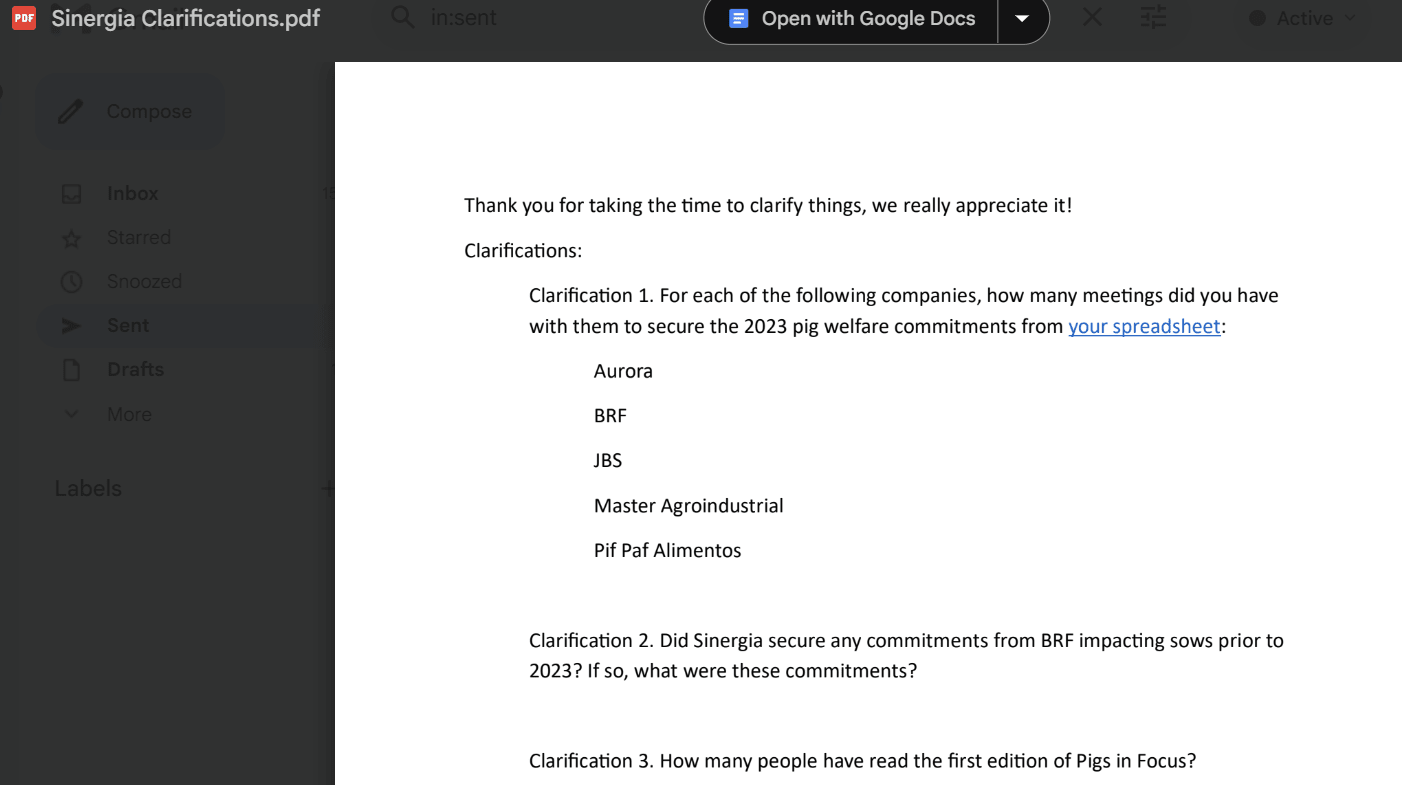VettedCauses
Posts 9
Comments67
@Jeff Kaufman 🔸, @Jason, @Toby Tremlett🔹,
Thank you for providing your opinions on this situation. Do you think it is reasonable for us to post our response on April 17? If so, we will notify Sinergia by email.
Maybe I am misunderstanding, I took this email as saying that you were sending them the post before posting in order for them to review, and clarify anything that needs clarifying
The clarifications refers to the 3 clarifying questions we sent (referenced in Email 7):

We didn't include this image in the list of emails before, but we've added it now. Sorry for the confusion!
Hi Toby, thank you for your reply.
Here's the request you're looking for:
"after reviewing them, we will inform you of the time required to provide our response".
We’re a bit confused, because the quoted statement — "after reviewing them, we will inform you of the time required to provide our response" — does not request anything from us. It simply says Sinergia will do something.
Hi Jason, thank you for your insights. We have decided not to post the article today to respect the charity's wishes as reasonably as we can.
We did not mention this in our initial post since we did not yet have permission from the charity (Sinergia) to post the emails. Now that we have permission, the full context regarding the "request to check on deadlines" can be found here (we don't want to strawman what Sinergia meant when they said this).
To me, that is enough to forbear from publishing tomorrow without getting into the lost e-mail issue at all.
Also, to clarify, Sinergia has indicated to us that no email was lost.

Hi Michael,
Thank you for your comment.
Here is the relevant quote from Sinergia Post 1 (note: we didn't add the bracketed part in this quote, Sinergia did): [1]
To further clarify:
As stated in the ACE Post:[2]
Sinergia Post 1 - See "Female Piglets Surgical Castration"
ACE Post - See "Issue 3"